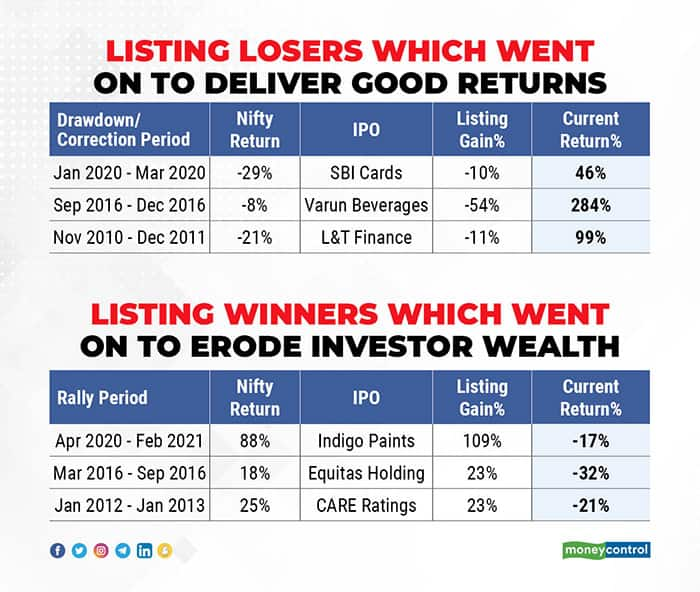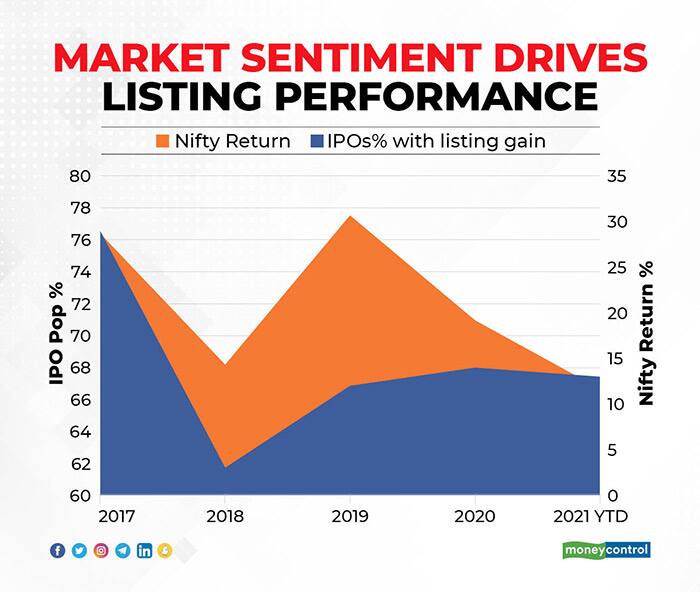Lately, the IPO (Initial Public Offering) market has been flush with deals. No sector wants to be left out of the race. On the one hand, we have cyclicals represented by Abhishek Integrations, Shyam Metalics, and Sona BLW Precision Forgings, and on the other hand, we have the defensives — Krishna Institute of Medical Sciences and Dodla Dairy.
To put this in perspective, so far in 2021, we have seen 24 IPOs of which at least 10 came in March alone. Now, after a hiatus of a few months, investors again have been inundated with options in the IPO market.
In such a scenario, what strategy should investors adopt?
If one is looking at an IPO as an investment opportunity, the drill stays the same as evaluating any listed entity — the business model should have a sustainable moat around it, the financials should be reflective of its competitiveness, and the valuations should be attractive. However, if one is looking to make a quick buck out of the listing ‘pop’, the rules of the game change.
The expected listing gains of a company’s IPO can be gauged by its subscription figures (with particular emphasis on qualified institutional bidders (QIBs) and non-institutional investors (NII) figures) and grey market premia. Looking at these metrics in the context of upcoming listings, only two of the five are expected to land big returns — Shyam Metalics and Dodla Dairy. Market sentiments can become a make-or-break factor in determining whether a listing pops.
Take, for example, the case of SBI Cards & Payment Services debuted in March 2020 - right in the middle of one of the biggest drawdowns in the history of Indian equity markets. Despite having great parentage and a business model to envy along with stellar financials, it got a tepid reception and closed roughly 10 percent below the issue price. SBI Cards is not alone either; such disappointing listings have marked almost all market downturns — Varun Beverages (54 percent listing loss in November 2016) and L&T Finance (11 percent listing loss in August 2011), to name a few.
On the other side, we have relatively weak businesses posting stellar debuts in periods where market sentiment has been off-the-charts. These have gone on to erode investor wealth once the pop fizzles out.

Of course, there are exceptions which prove the rule. But the general trend holds. This becomes evident by a simple analysis — calculate the IPO pop percentage as the ratio of number of IPOs which posted a gain on listing date to the total number of IPOs and plot those against the return given by the Nifty during the year as a proxy for market sentiment.
The year 2018 was marked by a mellow market sentiment as the Nifty yielded only 3 percent return, and only two-thirds of the IPOs listed with gains during the year. Moods picked up in 2019 as the Nifty returned 12 percent and as if on cue, 78 percent of the IPOs posted listing gains. This year, thus far, the Nifty has been riding a liquidity wave, while IPO markets are reflective of the prevailing uncertainty at the ground level.

Mellow moods in IPO markets could be taken as a sign of a market correction in the offing. Thus, investors are advised to stick with fundamentally-strong companies even when selecting IPOs. That is, go for stocks which are good buys even without the elusive pop.